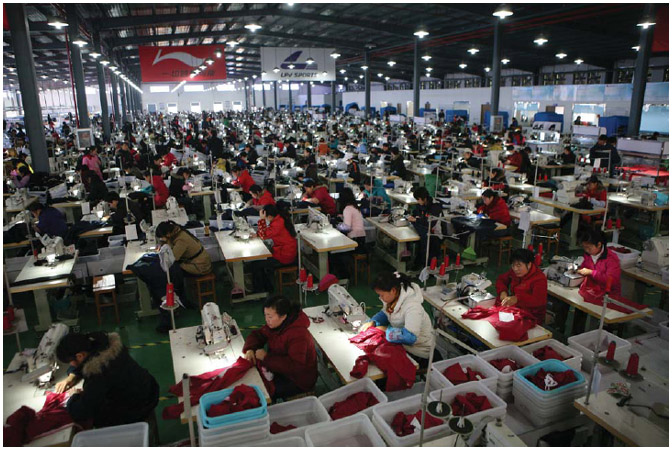Working conditions without regulation
Could working conditions in places that produce a huge amount of products improve while still allowing easy access to their products?
Conditions Today
Today in America, we have ways to protect workers from unjust treatment. One way that this has been done is through the Occupational Safety and Health Act. This act, approved in 1970, aimed to prevent the workplace injuries, diseases, and accidents that were so common before. It introduced three new institutions: the Occupational Safety and Health Administration (OSHA), the National Institute for Occupational Safety and Health (NIOSH), and the Occupational Safety and Health Review Commission (OSHRC). After this act was put in place, workplace fatalities, injuries, and illnesses have decreased by over 50% according to OSHA (Gale, 2009).
But these improvements make factory production in America more expensive, so corporations have been outsourcing their production to countries where it is cheaper, like China, Indonesia, and Bangladesh. You've probably seen labels on your products that say they were made in one of these countries. (Cottrill, 1996). But the labor in these countries is only cheaper because they have much worse working conditions. In Bangladesh, a country that commonly produces garments for companies in other countries, the minimum wage for the workers that do this is around 37 USD... per month. (Historic World Events, 2014)
There are other reasons that working in a factory in Bangladesh is so bad. One famous accident proves this. The Rana Plaza was an 8-story building in Bangladesh being used as a clothing factory, though it was built to be something like a bank or an office building. It was not intended to experience the stress that operating factory equipment creates, and it collapsed soon after cracks were found in the floor and walls. These cracks should have warranted an evacuation, and while people nearby were warned to stay away, the people inside were told to continue working. This accident resulted in the deaths of over 1,100 factory workers, and many more than that were injured. (Historic World Events, 2014)

Bad working conditions exist outside of clothing factories, too. Foxconn, a supplier of technology to major companies like Apple, Dell, and Sony, had a suspicious number of workers jump or fall to their deaths from factory buildings in 2010. Investigation into the conditions at those factories showed that the workers were spending huge amounts of time working at the factory. Working overtime was mandatory, and even if it wasn't, the workers weren't being payed enough to live without it as the minimum wage was equivalent to just 93 cents per hour. These workers quite literally lived at the factory, and it's not hard to see why so many were driven to suicide. Eweek, 2010